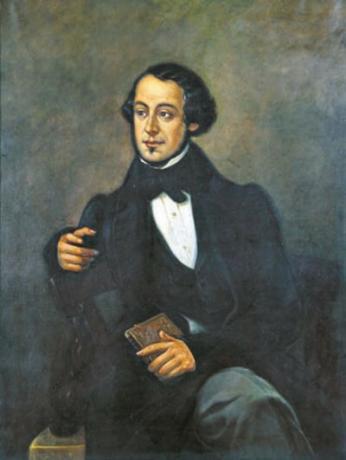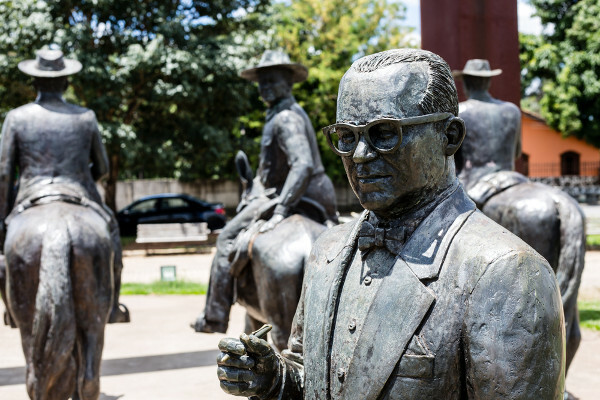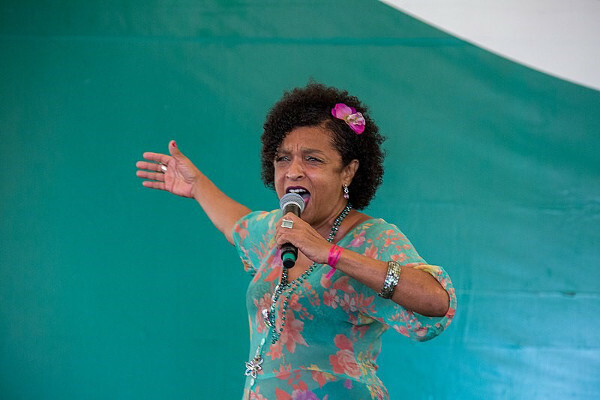O Romanticism inPortugal began in 1825 and lasted until the end of the century, in three distinct phases, each emphasizing determined theme within the characteristics of romantic aesthetics, with important personalities of the world literature.
See too:Romanticism in Brazil: know its peculiarities
Historical context
The 18th century was marked, in Europe, by the advance of the Enlightenment ideals, based on the search for freedom and the consecration of reason. heirs of Scientific Revolution of the 17th Century, the Illuminists believed that the progress of humanity was linked to the knowledge development, based on scientific research.
Man should have the freedom to know, unhindered by religious dogmas or political institutions, so that O enlightenment directly attacked the clerical power and despots of the Old Regime. It was the Enlightenment ideals that propelled the French Revolution, completely transforming the way of life of Europeans.
With the fall of the Ancien Régime and the advent of
Industrial Revolution, European nations were changing politically and economically. Industrialization triggered the rural exodus and the emergence of the first urban centers. The bourgeoisie became the new ruling class, while the nobility was rapidly losing its importance.In Portugal,there was also a struggle to overthrow the monarchic regime.. With the transfer of the Portuguese royal family to Rio de Janeiro, in 1808, in flight from French troops and the end of the monopoly of Brazilian ports, the Portuguese nobility saw itself weakened.

In 1820, the Liberal Revolution in the city of Porto. The revolutionaries, called vintistas, achieved victory and called assemblies to write a new Constitution whose parameters were inspired by the democratic ideals of the Revolution French. In 1821, the royal family returned to Portugal and, in 1822, the first Portuguese Constitution was promulgated, which transformed the country into an absolutist monarchy constitutional.
with the death of D. John VI, in 1826, a dispute for succession to the throne. Tensions between liberals and conservatives triggered, in 1832, the Portuguese Civil War, known as the Miguelista War, the Dois Irmãos War or Liberal Wars, which would last until 1834. It was during this period, mainly from 1822 onwards, that romanticism emerged in Portugal.
See more: Poetry, Poem and Prose
Features
- worship to sensitivity and exaltation of nature in opposition to the overvaluation of scientism, culture and industrialization: instead of the rational man and of reason as the main human attribute, the romantics described the sentimental man, moved by the feeling. Romantic landscapes often interact with the characters and their moods and also represent an escape valve from the incipient civilization.
- Construction subjective, individualistic and egocentric: the “I” plays a central role in romantic works, centered on the individual point of view, part of the romantic appreciation of freedom.
- Nationalism and patriotic exaltation: Napoleon Bonaparte spread throughout Europe the liberal ideals of the French Revolution. However, the peoples dominated by the Napoleonic enterprise refused to live under French rule, even if modern or democratic. The nationalist heritage in romantic works, therefore, stems mainly from this anti-Napoleonic resistance.
- Idealization: the hero, love and woman are often idealized in romantic works. Its qualities are exaggerated and its defects suppressed.
- Escapism: whether through madness, art, love or the escape from nature, the escape from reality is a recurrent theme of romanticism.
Read more: The Romantic Period in World Literature
Generations of Romanticism in Portugal
First generation: nationalism and liberal aspirations (1825-1840)
The first generation of Portuguese romanticism was marked by the thematic nationalists and ideals of liberalism. there was the resumption ofportuguese history, with medieval characters, and the trend towards the style of classicism, mainly in the form of poetry, with the use of meter and rime. The political situation in Portugal at the time made it difficult to establish a new literature, which at that time coexisted with the standards of classicism.

The author stands out in this generation. Almeida Garrett, author of the poem “Camões”, from 1825, the starting point of Portuguese romanticism. It is an independence manifesto, in an epic structure, which portrays the poet Luis Vaz deCamões as a romantic hero, persecuted and ashamed of the political situation in his country.
The authors Alexandre Herculano and Antonio Feliciano de Castilho also mark the first generation of Portuguese romantics.
Do not stop now... There's more after the advertising ;)
Second generation: ultra-romanticism (1840-1860)
In imprint exaggeratedlysentimental, the ultra-romantic works exalt sensibility and tend to have passionate and tragic plots. The themes gain a melodramatic, melancholic and gloomy tone, characterized by the overkill, for the loving idealization, fur pessimism and morbidity. It is a formal change, influenced by foreign authors, mainly the English Lord Byron and the German Johann Wolfgang von Goethe.
Heirs of the crisis established after the end of the civil war, which gave rise to a oligarchy from barons, the literary production of the second generation of Portuguese romantics moved away from liberal and revolutionary ideals. apathetic and contaminated by pessimism, wrote to the taste of the bourgeoisie already consolidated in power.

The main author of this generation is Camilo Castelo Branco (1825-1890), characteristic for having been a virtuoso of speech. Author of excessive and intense vocabulary, Castelo Branco gained fame with the novel perdition love (1846), tragedy of passion, of family explosions, which became a Romeo and Juliet Portuguese.
Third generation: romantic renewal (1860-1870))
The romantics of this last generation can be considered pre-realistic. They abandoned the excesses of the previous generation, as well as the idealized characters, in favor of a closer contact with reality.
The third generation of Portuguese romanticism kept the horizon of freedom and of the autonomy of art, but turned against the hyperbole and degenerate pessimism of the second generation. It is also called “social romanticism”, as it broke with the narcissistic aesthetics of the previous period. Influenced by French Author Victor Hugo (1802-1885), the third generation romantics wanted a renewal of poetic language, guided by the principle of modernity that was established.
Antero de Quental (1842-1891) was the great name of the period, considered the second greatest sonnetist from Portugal. Poet and thinker, endowed with a restless and questioning posture, he intended to return to literature the revolutionary spirit of the first generation of romanticism. Defender of modernity, he tried to reconcile science and metaphysics through philosophy, which he expressed in the form of poetry.
![Antero de Quental had a great importance in Portuguese poetry, with the authorship of several sonnets. [1]](/f/bff72bb85138a5de0fd78e85efc59f27.jpg)
Construction
⇒ Poetry
Almeida Garrett
the portrait of Venus (1821)
caton (1821)
Camões (1825)
D. Branca or The conquest of the Algarve (1826)
Lyrics by João Mínimo (1829)
Merope (1841)
flowers without fruit (1845)
Fallen leaves (1853)
Alexandre Herculano
Poetry: I. the believer's harp; II. various poems; III. versions (1850)
Camilo Castelo Branco
The unredressed punners (1845)
the dream of hell (1845)
Antero de Quental
Sonnets (1861)
Beatrice and Fiat Lux (1863)
modern odes (1865)
romantic springs (1872)
Sonnets (1881)
rays of extinct light (1892)
theater
Almeida Garrett
A report by Gil Vicente (1838)
The Santarém Shack (1842)
Friar Luís de Sousa (1844)
D. Filipa de Vilhena (1846)
Camilo Castelo Branco
Augustine of Ceuta (1847)
The Marquis of Torres Novas (1849)
Romance
Almeida Garret
the arch of Sant'Ana (1845-1850, 2 volumes)
travels in my land (1846)
Alexandre Herculano
Eurico the presbyter (1844)
the Cistercian monk (1848)
the fool (1878)
short stories and novels
Alexandre Herculano
Legends and narratives (1851)
Camilo Castelo Branco
Anathema (1851)
Black book by Father Dinis (1855)
Where is the happiness? (1856)
Carlota Angela (1858)
perdition love (1862)
heart, head and stomach (1862)
saving love (1864)
Guilherme do Amaral's Memories (1865)
the fall of an angel (1866)
Candal's crazy (1867)
Novels from Minho (1875-1877, 2 volumes)
Eusebio Macário (1879)
Prose in other formats (letters, polemics, pamphlets, philosophical texts)
Camilo Castelo Branco
The clergy and mr. Alexandre Herculano (1850)
Antero de Quental
common sense and good taste (1865)
The dignity of letters and official literature (1865)
Defense of the encyclical letter of His Holiness Pius IX (1865)
Portugal before the Spanish Revolution (1868)
Causes of the decay of peninsular peoples (1871)
Considerations on the philosophy of Portuguese literary history (1872)
poetry today (1881)
The naturists' philosophy of nature (1886)
General trends in philosophy in the second half of the 19th century (1890)
Exercise solved
Read an excerpt from the poem “Arrábida”*, written in 1830 by the poet Alexandre Herculano:
I.
Hail, oh southern valley, longing and beautiful!
Hail, O fatherland of peace, holy desert,
Where does the great voice of the mobs not roar!
Sacred ground to God, could the world
The poet flees, embraces the wilderness,
Like the strong ash tree the fragile ivy,
And the pilgrimage of the tomb fulfilling,
Only knowing, upon awakening in death,
This life without harm, without pain, without end,
What a continuous intimate voice promises us
In traffic called the living of man.
[...]
XIII
[...]
Very black looms here, in the peace of the valley,
The image of these people, which ebbs
From dwellings to the street, to the square, to the temple;
Who laughs, and cries, slacks, and moans, and dies,
Who worships God, and curses him, and fears him;
Extremely lowly mixed nonsense
And extremely bold; huge figure,
Now at the feet of a vile outstretched despot,
Now arising, and flinging into nothingness
The memories of the centuries that were,
And then about nothingness falling asleep.
[...]
*Arrábida refers to Serra da Arrábida, a paradisiacal place for its natural beauty, located in the district of Setúbal, in Portugal.
identify in the poem
The) two characteristics of the romantic aesthetic;
B) a characteristic that locates it as a work of the first generation of Portuguese Romanticism.
Commented resolution:
The) These are typically romantic characteristics expressed in the poem:
- exaltation of nature, present in the first three verses, as well as in the title of the poem, dedicated to a region of preservation natural: “Hail, oh valley of the south, longing and beautiful!/Hail, O country of peace, holy desert,/Where does not the great voice of the mobs!"
- escapism, as seen in the poet's desire to escape: “Soil sacred to God, could the world/The poet flee, confine himself to the wilderness” .
B) The first generation of Portuguese Romanticism is characterized by nationalist and liberal aspirations, as can be seen in the negative representation of absolutism in the verse “Now at the feet of a vile despot extended".
Image Credit:
[1] have/commons
by Luiza Brandino
Literature teacher


